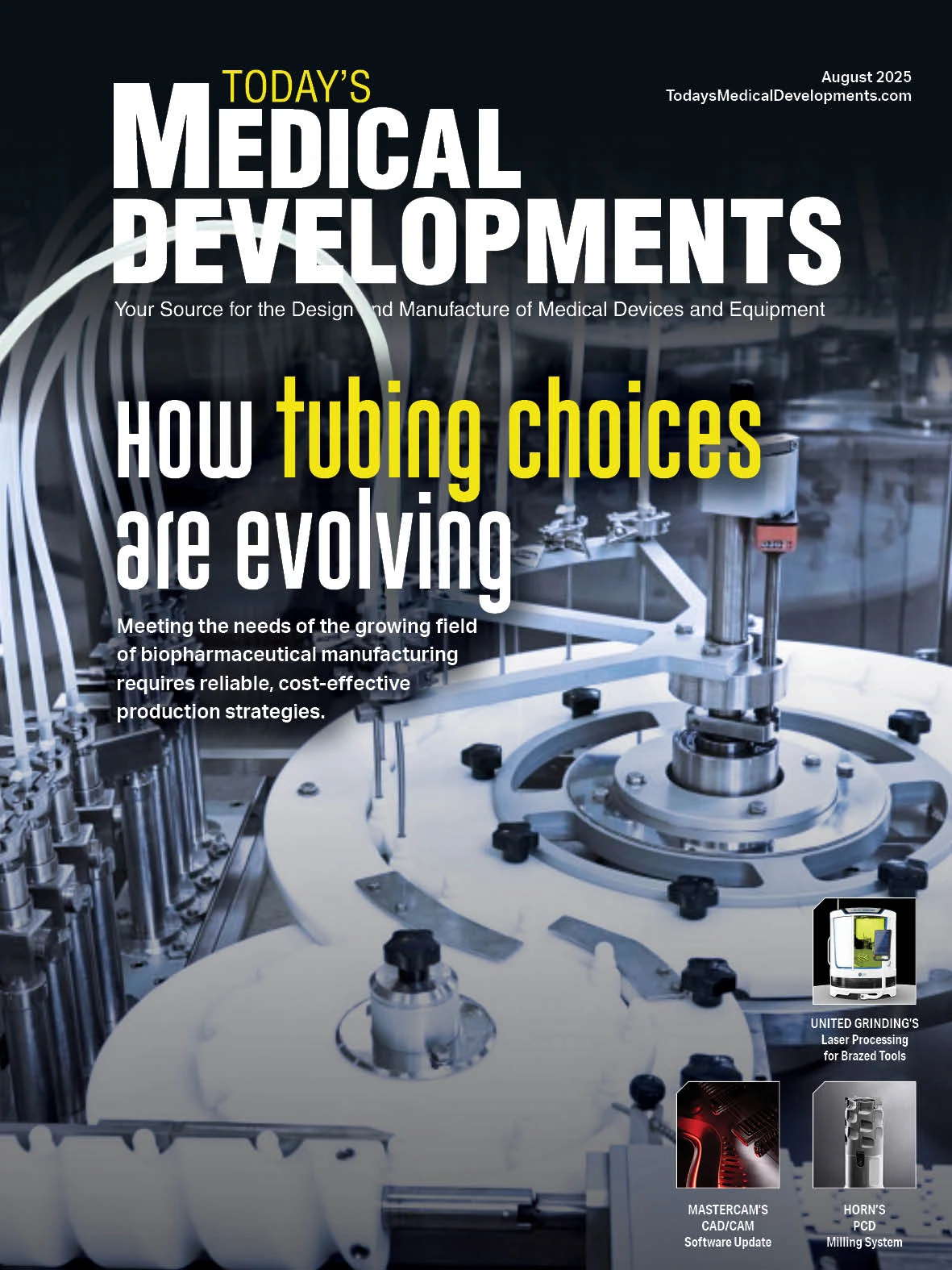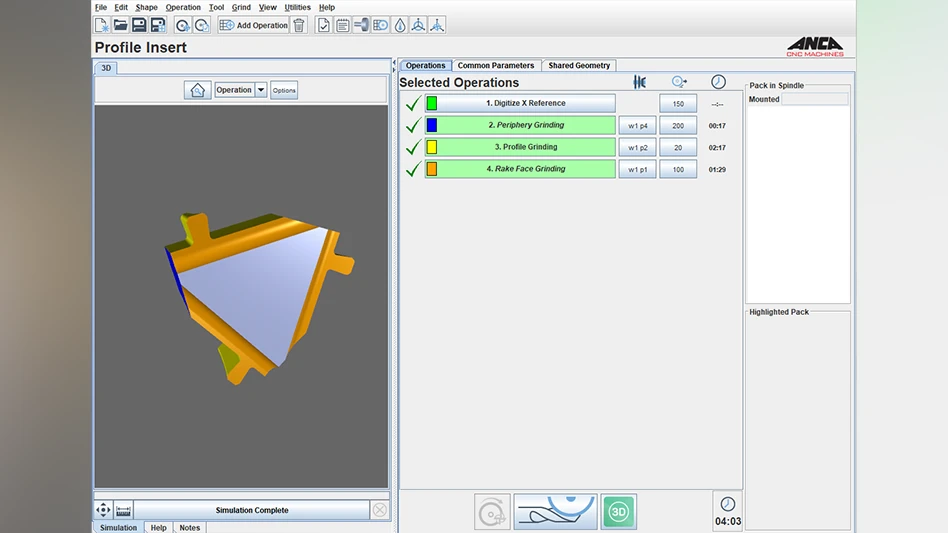
Editor's Note: This article originally appeared in the August 2025 print edition of Today's Medical Developments under the headline “How to spot design deficiencies in tooling for injection molding”.
In medical device manufacturing, the quality of tooling for thermoplastic injection molding can make or break your products – impacting efficiency, yield, cost, reliability, and time to market. Yet too often, molded parts and tools are designed without input from manufacturing experts, leading to defects derailing timelines and inflating costs.
Knowing how to identify and prevent these flaws gives original equipment manufacturers (OEMs) a clear competitive advantage. Here’s how to spot design deficiencies in tools for injection molding – and how to avoid them.
High stakes of tool design in medical device manufacturing
Tooling design directly influences product quality, safety, and performance. Design flaws such as poor venting, inadequate cooling, and unfavorable part geometry often produce unacceptable plastic parts that fail to meet spec due to:
- Part failures: Short shots, leaks, and structural weaknesses
- Cosmetic issues: Burn marks, flash, and blemishes
- Production inefficiencies: High scrap rates, extended cycle times, and reduced output
The consequences of failures include patient safety risks, erosion of brand trust, regulatory delays, and costly rework and production downtime – all stemming from preventable design missteps.
Common tool deficiencies
Even experienced teams can overlook common tool design flaws disrupting production and compromising quality:
- Poor venting: Leads to trapped air, voids, short shots, and burn marks
- Inadequate cooling: Causes uneven shrinkage, warping, sink, and extended cycle times
- Unfavorable part geometry: Results in dimensional failures, part misfits, leak paths, and structural weaknesses
- Insufficient draft or part ejection design: Causes sticking parts, drag marks, extended cycle times, and potential tool damage
How to spot tool design deficiencies
Tool design deficiencies can be identified at various stages – from the initial design phase to tool build, initial trials, and production ramp-up. It’s important to know what to look for at each stage to catch problems before they significantly impact cost and quality.
During the design phase
The design phase is the ideal time to catch tool deficiencies before they escalate into costly part failures, rework, and delays.
Review Plastics Industry Association guidelines
Begin by reviewing your tool design against Plastics Industry Association (PIA) guidelines. These standards are often overlooked but offer valuable guidance to help identify design issues early.
PIA guidelines help designers address common problem areas such as:
- Non-uniform wall sections, inadequate venting provisions, and improper ejection options
- Tolerance stacks – how parts interface with other parts, as each must fit precisely within an assembly
- Aesthetic criteria such as voids, air bubbles, and surface callouts
- Gating and flow issues
Improper gating, in particular, is a common design flaw as it prevents the polymer from reaching all areas of the cavity. Gates should be placed in the thickest wall sections, as thin wall areas cool too quickly and block flow to heavier sections, leading to packing issues and sink.
Multi-gated parts and components with holes increase complexity by introducing multiple flow fronts. Designers must predict flow fronts to ensure proper temperatures and prevent points of failure where they converge.

Design for Manufacturing review
A Design for Manufacturing (DFM) review confirms key design features are optimized for production efficiency, including draft angles, vent placement, cooling layout, ejection provisions, and gate and runner sizing.
Too often, products are designed without regard for manufacturing cost or scalability. Significant time and effort go into designs that are ultimately too costly to bring to market. Many OEMs outsource production without a DFM review, resulting in product redesign that can delay production by as much as four to six weeks – or even longer.
During a DFM review, designers work with a subject matter expert who brings deep molding experience to validate design choices for manufacturability and cost efficiency. Early collaboration prevents problems from being designed in and dramatically accelerates time to market.
Mold flow analysis
Mold flow analysis is a powerful tool for preventing failures, and it should always be run before a design freeze. This process simulates plastic flow to identify air traps, weld lines, hot spots, stress concentrations, and unfilled areas so they can be addressed during the design phase.
During tool build and initial trials
Tool design deficiencies can still surface after the design freeze, so it’s critical to verify the mold performs as expected during tool build and initial trials.
Visual inspection/first article inspection
Watch for signs of missing and shallow vents, incomplete cooling paths, steel misalignments, and rough finishes. Common indicators include burning, flash, and short shots.
Functional and strength testing
Conduct functional and strength testing during initial trials – including tensile, burst/pressure, and fatigue testing – to confirm part performance under real-world conditions.
Scientific injection molding (SIM)

This phase is also the time to implement scientific injection molding (SIM), a series of tests to establish the process window the mold and press can achieve. SIM provides a reliable, data-driven baseline for identifying and troubleshooting problems.
Key techniques include:
- Rheology study: Critical to understanding how the polymer behaves under heat and pressure. A rheology study assesses flow characteristics, cooling behavior, residence time, and appropriate barrel size for processing. Ultimately, it ensures the polymer can fill the mold cavity at the required injection speeds.
- Cavity balancing: Ensures even polymer distribution across all cavities. You must be able to adjust the fill velocity so cavities balance out. Without good material dispersion, you won’t get a good process window, and uneven fill can indicate mold build issues.
- Cooling: Cavities must cool uniformly to prevent quality variations. A common problem with multicavity tools is when the water line layout cools one cavity more than others, causing inconsistencies in part quality.
During production ramp-up
Production ramp-up is the final opportunity to confirm your tool performs reliably under real-world conditions – and to catch any lingering design issues before full-scale production begins.
Part failure patterns
During production ramp-up, recurring part defects often reveal whether the root cause lies in the process or the tool design itself. Key indicators pointing toward tool design deficiencies include:
- Inconsistent cavity performance: In a multicavity tool, if one cavity consistently produces different results, it often suggests a mold-related issue (such as uneven cooling or flawed geometry).
- Persistent defects after process optimization: Once a qualified process window is established, machines typically produce consistent results. Minor process adjustments can compensate for material viscosity variations, but if defects persist after fine-tuning the process – such as parts failing to meet spec – the problem may stem from a tool design or a manufacturing flaw.
Account for environmental conditions
Environmental factors are often underestimated, but in precision molding – where tight tolerances are critical – they can have a major impact on part quality.
Seasonal shifts can cause dramatic differences. For example, Minnesota winters can drop to -15°F with 15% relative humidity, while summers might reach 90°F with 80% humidity. Even in controlled environments, external conditions can impact material flow, cooling rates, and overall performance. If issues persist after accounting for environmental variables, the tool could be the root cause.
Optimize the process to pinpoint mold issues
A well-developed and repeatable process serves as a control mechanism. It’s important to understand that not all quality issues stem from the tool. In some cases, the process is to blame – and knowing when the process is at fault can prevent unnecessary tool modifications.
One common example is improper barrel and screw sizing. If you’re molding a small amount of plastic with an oversized barrel, the material might sit in the barrel too long and degrade from excess heat exposure. In addition, short screw travel limits the machine’s ability to precisely control injection.
Selecting the right barrel and screw size for the application helps maintain proper temperatures and enables finer injection control. Before questioning the tool design, ensure the process is properly matched to the job.
Once process, material, and environmental variables are ruled out, remaining issues often stem from the tool itself.
Tool design deficiencies are problematic yet preventable, especially when OEMs partner with experienced medical contract manufacturers during the design phase. Identifying and addressing mold tool design deficiencies early empowers OEMs to avoid costly setbacks, improve part quality, reduce production costs, and accelerate time to market.
Intricon
https://www.intricon.com

Explore the August 2025 Issue
Check out more from this issue and find your next story to read.
Latest from Today's Medical Developments
- Arcline to sell Medical Manufacturing Technologies to Perimeter Solutions
- Decline in German machine tool orders bottoming out
- Analysis, trends, and forecasts for the future of additive manufacturing
- BlueForge Alliance Webinar Series Part III: Integrate Nationally, Catalyze Locally
- Robot orders accelerate in Q3
- Pro Shrink TubeChiller makes shrink-fit tool holding safer, easier
- Revolutionizing biocompatibility: The role of amnion in next-generation medical devices
- #56 Lunch + Learn Podcast with Techman Robot + AMET Inc.





